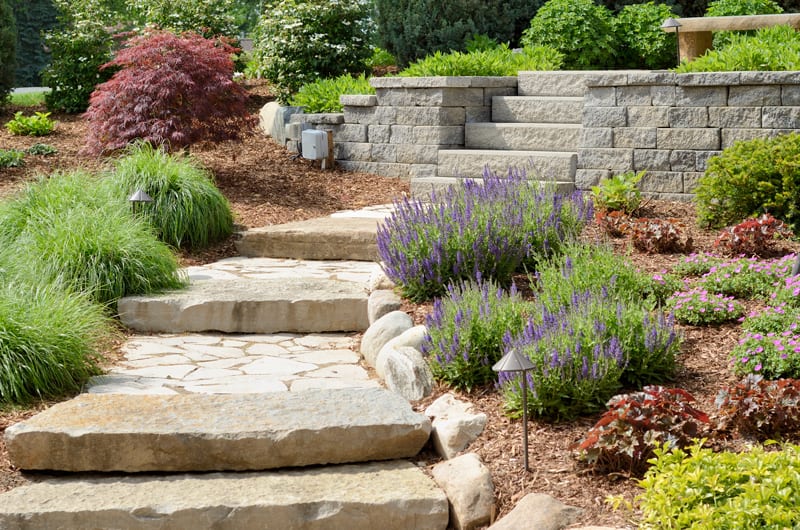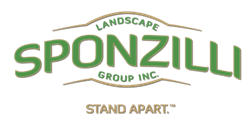Landscaping is split into two main design elements: hardscaping and softscaping. Hardscaping includes materials that make pathways, patios, retaining walls, and stairs. They create curb appeal, organization, and outdoor living spaces. Softscaping is incorporated around hardscaping. It is the flowers, soil, grass, and trees that breathe life into the rest of the area. To create the proper balance, it’s important to choose the right types of hardscaping materials for your landscape.
1) Hardscaping Materials
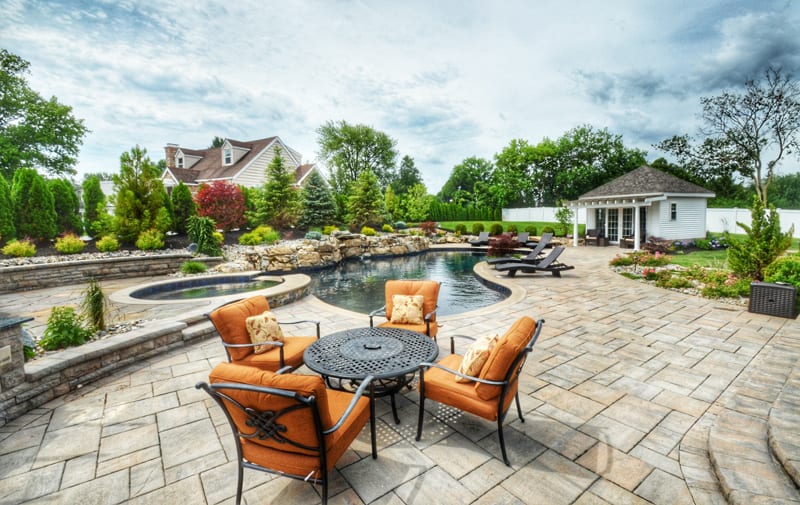
The best hardscaping materials reflect the needs and budget of the homeowner. Hardscaping is the foundation and the template for all other landscape design elements. When choosing hardscaping materials to use in your landscape design, consider the durability, aesthetic appeal, and cost of your desired look.
For a design that truly stands apart, incorporate a variety of hardscaping materials into your landscape. The textures of each hardscape against the contrasting softscape will give your property depth and character.
2) Brick
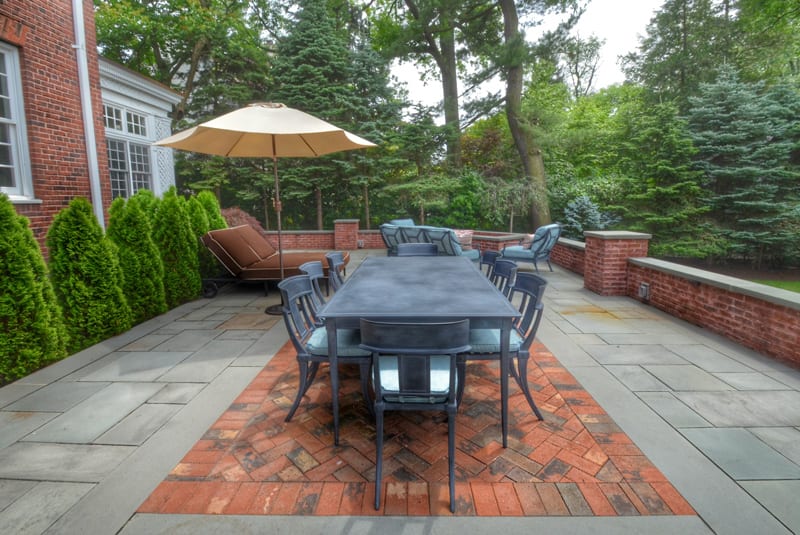
Brick is great for people who want very little maintenance. It is also perfect for intricate, tight pattern designs such as basket weave, herringbone, and running bond. Although it is limited in its color range, brick is the right choice for design fanatics and those who want to make a statement.
3) Bluestone
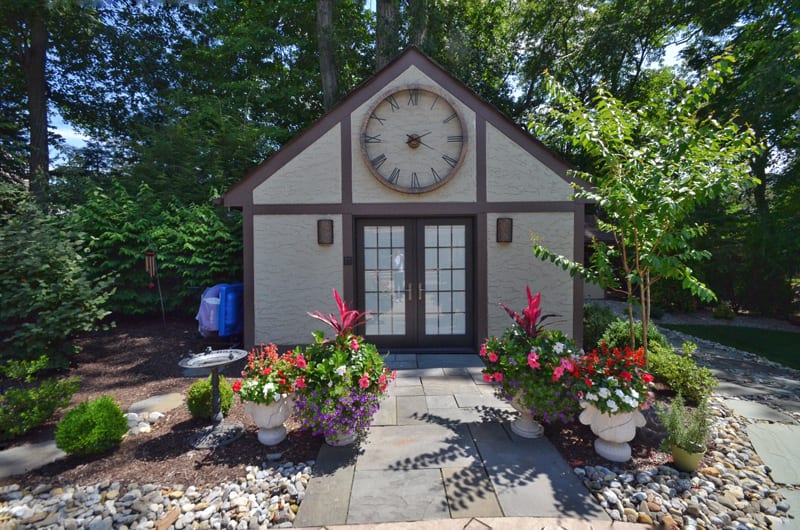
Contrary to the sound of its name, Bluestone is available in a variety of shades, including the very popular, silvery blue, and lesser seen, rust, green, brown and lilac. It also comes in two textures for a natural look or a smoother feel. Bluestone can be laid in irregular shapes for a more rustic feel or as a pattern of squares and rectangles for a modern look. It’s easy to maintain, durable, and doesn’t need a protective seal.
4) Travertine
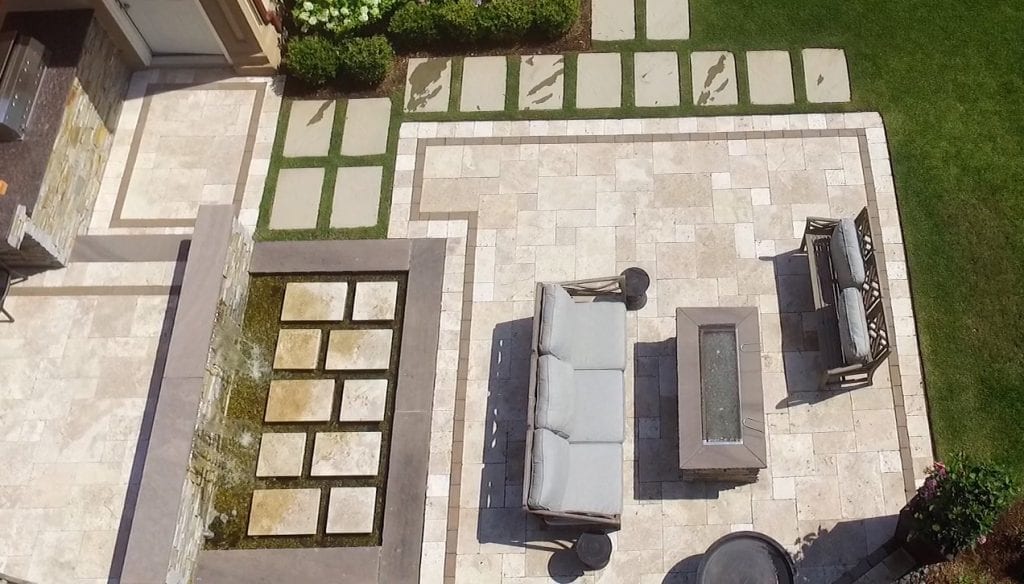
Travertine stays cool to the touch and provides a slip-resistant texture. It’s perfect for pool areas and outdoor kitchens. Travertine is most often seen in white or warmer, tan colors but also comes in grays and browns. Although this material is sensitive to acids and costs more initially, it will hold its beauty for a lifetime.
5) Concrete
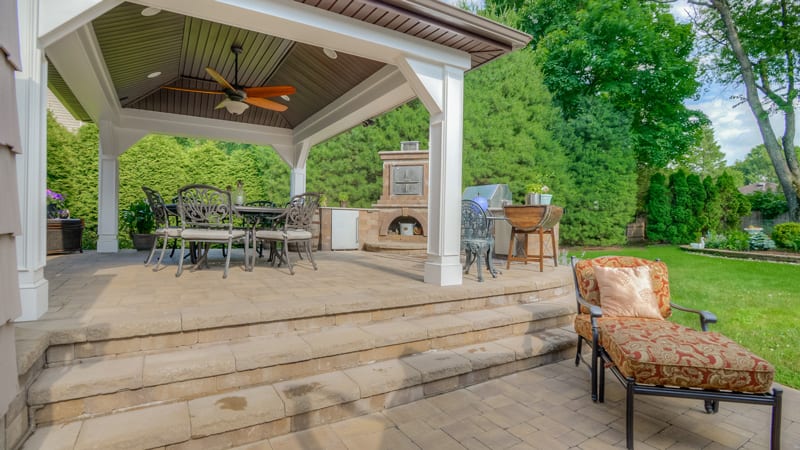
Concrete has been used as a catch-all in hardscaping for many years. It is a cheaper alternative to other hardscaping elements. Concrete is durable and can withstand the trampling of families and vehicles alike. The major downside to concrete is that it requires maintenance. In extreme weather fluctuations, concrete is liable to stain, become porous, and crack.
6) Loose Stone
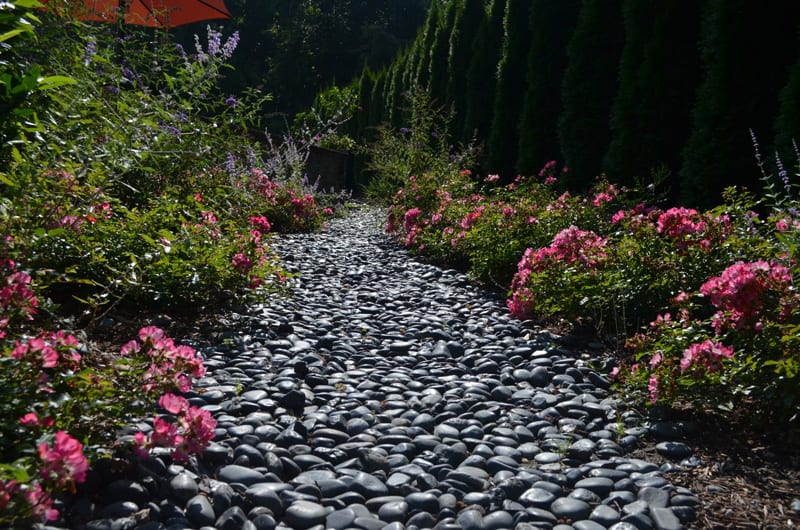
Rocks are another cost-effective hardscaping material. Loose stone can be purchased in a variety of bulk colors, sizes, and shapes. This makes it a popular choice for individuals with a knack for design and color coordination. Unfortunately, rock is not a favored choice for outdoor living spaces or pathways because it’s not a flat, even surface. This can be dangerous in cooking areas or near pools. It can also make clearing off these spaces in the winter more difficult.
7) Mulch
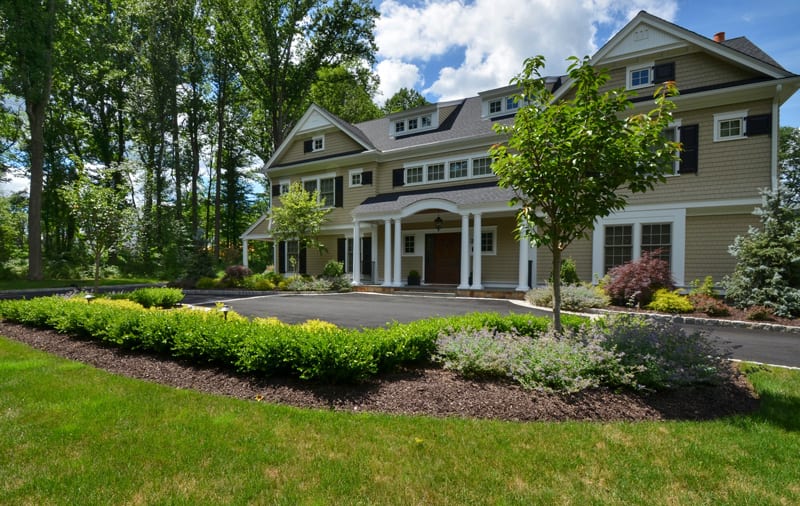
Mulch is a cheaper and viable alternative to rock. Organic mulch is even good for the environment. When it breaks down, it can become a hotbed for nutrition that is great for most property owners’ plants. Mulch comes in colors that blend in with the natural colors of lawns and garden beds.
Both stone and mulch are good options for specific areas of your landscape. They are perfect for adding depth and intrigue into a design but lack the stability and permanence of other options.
All in all, there are a wide variety of hardscaping materials available to fit the needs of individual homeowners. By blending an assortment of hardscaping materials with your softscape you can maximize the look of your landscape design. Incorporate materials that fit your lifestyle, décor, and budget.
Interested in getting a professional opinion on your hardscaping project? Contact Sponzilli Landscape Group for a free quote today!

